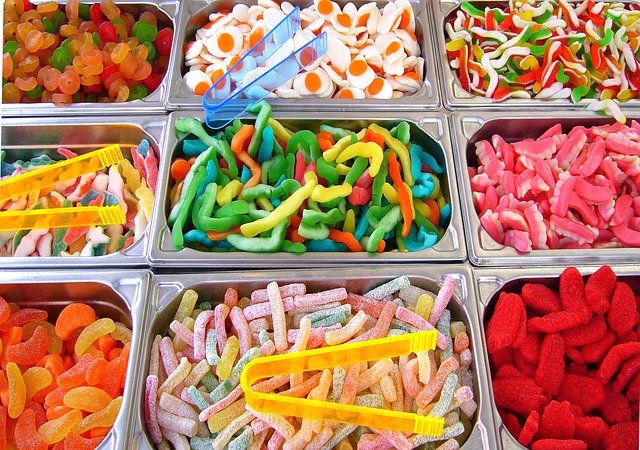By Tim Lambert
Early Sweets
People have always liked eating sweet food. The earliest sweet was, of course, honey, which people have eaten since prehistoric times. In the Middle Ages, rich people ate desserts like preserved fruits, jelly and dried fruit, and wafers made from batter.
The Tudors were also fond of sweet foods (if they could afford them), which they called sweetmeats. The rich ate preserved fruit, gingerbread, sugared almonds, and jelly. Marzipan was introduced into England in the late Middle Ages. It is a paste made of almonds and sugar. The Tudors used marzipan to make edible sculptures of animals, castles, trees, and people called subtleties. Furthermore, people have eaten barley sugar since the 17th century.
Chocolate comes from Central America. It was introduced into Europe in the 16th century. It was first recorded in England in the 17th century.
Meanwhile, for centuries, people used the licorice plant as a medicine but in 1760 an Englishman named George Dunhill added sugar and turned it into a type of sweet. However, before the Industrial Revolution confectionery was handmade and so it was expensive.
19th Century Sweets
In the 19th century mass production made sweets cheaper. Meanwhile, the first chocolate bar was made in 1847 and milk chocolate was invented in 1875. Also in that era, new sweets were invented. Modern marshmallows were invented in about 1850. Toffee was invented in the early 19th century and fudge was invented in the USA in the 1880s. Peanut brittle and jelly beans were also invented in the late 19th century.
Meanwhile, Kendal mint cake was invented in 1869. Turkish delight was invented in 1777 and it became popular in Europe in the 19th century. The first recipe for potato crisps appeared in a book by Dr William Kitchiner published in 1817.
20th Century Sweets
Sweets became still cheaper and more common in the 20th century. Choc-ices went on sale in the USA in 1921. The ice lolly was patented in 1923. Meanwhile, bubble gum was invented in 1906 and the first lollipops were sold in 1908. In 1922 ice cream was sold in the street in Britain for the first time from tricycles with a box on the front. Sales of ice cream boomed in the 1930s.
Many new kinds of sweets were introduced in the 20th century. Dairy Milk was introduced in 1905. Toblerone followed it in 1908. Later came Flake (1920), Fruit and Nut (1921), Milky Way (1923 in the USA and 1935 in Britain), Crunchie (1929), Snickers and Freddo (1930), Mars Bar (1932), Whole Nut (1933), Aero and Kit Kat (1935), Maltesers and Blue Riband (1936) and Smarties, Rolo and Milky Bar (1937).
Later came Polo Mints (1948), Bounty (1951), Munchies (1957), Picnic (1958), Caramac (1959), Galaxy (1960), Topic (1962) Toffee Crisp (1963), Twix (1967), Curly Wurly (1971), Yorkie, Double Decker and Lion Bar (1976) and Wispa (1983). Amazin Raisin bars went on sale in 1971 but they stopped making them in 1978.
Lovehearts were first made in 1933. Starburst went on sale in 1960. Chewits were introduced in 1965. Skittles were first made in 1974.
Rowntrees made chocolate beans in the late 19th century. In 1937 they were renamed Smarties chocolate beans.

Walnut Whip was first sold in 1910. New boxes of chocolates were introduced. Milk Tray dates from 1915. Terry’s Chocolate Orange and All Gold were introduced in 1932. Black Magic was introduced in 1933. Dairy Box and Quality Street came in 1936. Cadbury’s Roses dates from 1938. After Eight dates from 1962.
Meanwhile, the first ready-salted crisps were sold in 1960. Flavoured crisps followed in 1962.
In Britain sweets and chocolate were rationed from 1942 to 1953. But 5 February 1953 was a day of rejoicing for children, on that day sweet rationing ended!
In North America sweets are called candy. The word Candy was originally derived from Arabic and Persian. It was once used in England but it has generally gone out of use.

Last revised 2024